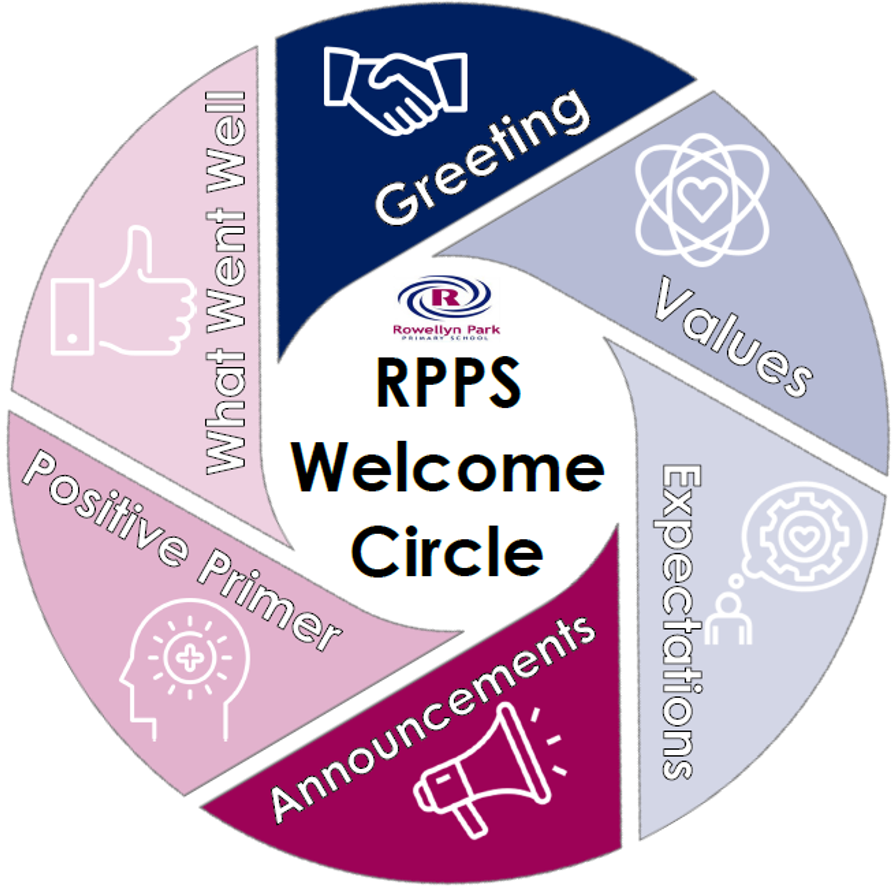Help all students succeed with the Berry Street Education Model and build a school of choice for students, parents and teachers alike.
The Berry Street Education Model (BSEM) equips both mainstream and specialist schools with practical, classroom-based strategies to increase the engagement of all students, including those with complex, unmet learning needs.
BSEM enables schools to support students’ self-regulation, relationships and wellbeing to increase student engagement and significantly improve academic achievement.
Find out more at https://www.berrystreet.org.au/learning-and-resources/berry-street-education-model
HOW WE INCORPORATE BSEM STRATEGIES AT RPPS
Welcome circles

This year, many of our classroom teachers have adopted a practice known as a ‘Welcome circle’, which usually occurs first thing in the morning. Your children may have mentioned this or your child’s teacher may have shared this with you. See the attached graphic which explains the components of our Welcome circle practice.
This practice is adopted from the Berry Street Educational Model, a model that a team of staff are undertaking training in this year. A description of this practice:
The first 5 minutes of class are critical for setting the tone for the rest of the learning. Consistent rhythms and routines, particularly ones that embed intentional positive micro-moments, are powerful healing interventions as they “help build confidence that positive events will occur and …flexibility when unexpected events are encountered” (Brunzell, 2016, p.76). Welcome circles – nurturing routines that support engagement in learning and wellbeing (Roffey, 2006) – are a key strategy for consistently embedding strengths and also tending to the body and relational connection.
This routine of forming a circle with our young people to review key values and expectations and celebrate any announcements and successes, serves as a threshold between the outside world and the complex task of learning. It allows young people to ground themselves, co-regulate and establish a common rhythm for the learning day. We know that schools are often pressed for time, and it can be tempting to jump straight into content. However, when we take the time to check in and connect with our young people, we are not only setting them up to get much more out of the learning, but we are providing an opportunity for us, as educators, to get on the front foot of any potential issues that may present as speedbumps for learning.
The practice of sitting or standing in a circle is one that many cultures have used for centuries – and continue to use today – as a way to support decision making and resolve conflict (Roffey, 2006). By taking the time to be together, side by side, to establish a common understanding and share positive emotions, we are supporting young people to build relationships with their peers and share power in healthy, relational ways. The circle allows us to ensure that everyone is equally visible and connected and, symbolically, that each person’s worldview stands on equal footing (Brown & Di Lallio, 2020).
Brain Breaks

A brain-break is any short activity that is a break from the specified learning activity and is designed to enhance relationships (teacher-student and/ student-student).
Brain-breaks involve taking a short break in a lesson to engage in a burst of physical movement or a fun mental challenge.
Brain-breaks only take up a small amount of lesson time, yet the benefits of increased engagement levels and cognitive functioning have been found to significantly increase academic performance.
Research has shown that students participating in regular brain-breaks display improved academic performance in core subjects like literacy and numeracy.
